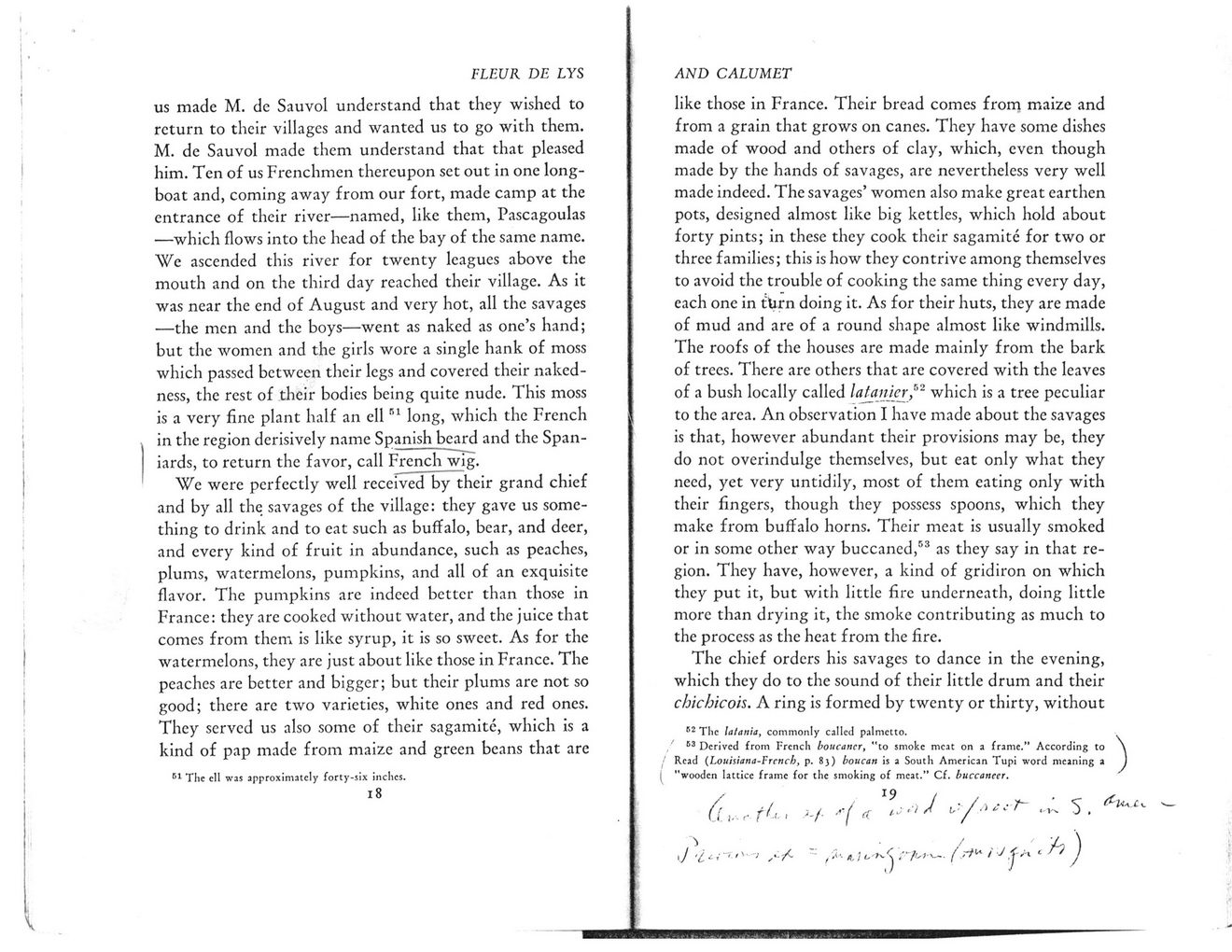This text was obtained via automated optical character recognition.
It has not been edited and may therefore contain several errors.
FLEUR DE LYS us made M. de Sauvol understand that they wished to return to their villages and wanted us to go with them. M. de Sauvol made them understand that that pleased him. Ten of us Frenchmen thereupon set out in one longboat and, coming away from our fort, made camp at the entrance of their river—named, like them, Pascagoulas —which flows into the head of the bay of the same name. We ascended this river for twenty leagues above the mouth and on the third day reached their village. As it was near the end of August and very hot, all the savages —the men and the boys—went as naked as one’s hand; but the women and the girls wore a single hank of moss which passed between their legs and covered their nakedness, the rest of their bodies being quite nude. This moss is a very fine plant half an ellni long, which the French in the region derisively name Spanish beard and the Spaniards, to return the favor, call French wig. We were perfectly well received by their grand chief and by all the savages of the village: they gave us something to drink and to eat such as buffalo, bear, and deer, and every kind of fruit in abundance, such as peaches, plums, watermelons, pumpkins, and all of an exquisite flavor. The pumpkins are indeed better than those in France: they are cooked without water, and the juice that comes from them is like syrup, it is so sweet. As for the watermelons, they are just about like those in France. The peaches are better and bigger; but their plums are not so good; there are two varieties, white ones and red ones. They served us also some of their sagamite, which is a kind of pap made from maize and green beans that are 61 The ell was approximately forty-six inches. AND CALUMET like those in France. Their bread comes from maize and from a grain that grows on canes. They have some dishes made of wood and others of clay, which, even though made by the hands of savages, are nevertheless very well made indeed. The savages’ women also make great earthen pots, designed almost like big kettles, which hold about forty pints; in these they cook their sagamite for two or three families; this is how they contrive among themselves to avoid the trouble of cooking the same thing every day, each one in tUrn doing it. As for their huts, they are made of mud and are of a round shape almost like windmills. The roofs of the houses are made mainly from the bark of trees. There are others that are covered with the leaves of a bush locally called latanier,52 which is a tree peculiar to the area. An observation I have made about the savages is that, however abundant their provisions may be, they do not overindulge themselves, but eat only what they need, yet very untidily, most of them eating only with their fingers, though they possess spoons, which they make from buffalo horns. Their meat is usually smoked or in some other way buccaned,53 as they say in that region. They have, however, a kind of gridiron on which they put it, but with little fire underneath, doing little more than drying it, the smoke contributing as much to the process as the heat from the fire. The chief orders his savages to dance in the evening, which they do to the sound of their little drum and their chichicois. A ring is formed by twenty or thirty, without 62 The latania, commonly called palmetto. 63 Derived from French boucancr, "to smoke meat on a frame,*1 According to Read (Louisiana-Frcncb, p. 83) boucatt is a South American Tupi word meaning a "wooden lattice frame for the smoking of meat.” Cf. buccaneer.

Penicaut Narrative Document (007)